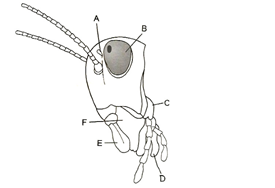NEET is the most famous and important medical entrance examination held in our country. This exam is an objective type, an offline test which includes 4 sections namely– Physics, Chemistry, Botany, and Zoology. The maximum marks that can be scored are 720 marks and have 180 questions.
About half of the paper consists of questions from Biology, as the NEET exam essentially focuses on capacitating students to go for seats in medical courses. One of the most significant and crucial sections in the NEET exam is of Biology. It comprises of theories, descriptions, discoveries, diagrams, definitions, explanations of differences, and relations. The majority of the topics covered in the NEET syllabus are from the NCERT syllabus of Class 11 & 12 and other related sources become part of the rest of the syllabus.
Clear Exam curates a list of articles selected by professionals who recommend the highly vital topics for NEET exams. The table below takes you directly to the respective topic where the in-depth article and the MCQs are available for an easy and productive learning experience. Prior to solving NEET question papers or practicing mock tests, you must ensure to study the basic concepts in NEET and practice a few sample questions related to this exam. Students will be covered for all their studies as the topics are available from basics to even the most advanced.
Q1. Body of frog is divisible into
Solution
Body of frog is divisible into head and trunks.Neck and tail are absent in frog
Body of frog is divisible into head and trunks.Neck and tail are absent in frog
Q2.The given figure is related with the head region of cockroach. Identify A to F the correct combination of options
Solution
A-Ocellus, B-Compound eye, C-Maxilla, D-Labium E-Labrum, F-Mandible
A-Ocellus, B-Compound eye, C-Maxilla, D-Labium E-Labrum, F-Mandible
Q3. In frog, the blood from the heart is carried to all part of the body by
Solution
Frog contains three-chambered heart, in which two atria and one ventricle is present. The blood from the heart is carried to all parts of the body by arteries (arterial system). The veins collects blood from the different parts of the body to the heart and forns the venous system
Frog contains three-chambered heart, in which two atria and one ventricle is present. The blood from the heart is carried to all parts of the body by arteries (arterial system). The veins collects blood from the different parts of the body to the heart and forns the venous system
Q4. How many eyelid membranes are present in frog?
Solution
Frog has three eyelid membranes, one is transparent to protect the eyes under water and the two varies from translucent to opaque. Each eyes has closable upper and lower lids and a nictitating membrane, which provides further protection
Frog has three eyelid membranes, one is transparent to protect the eyes under water and the two varies from translucent to opaque. Each eyes has closable upper and lower lids and a nictitating membrane, which provides further protection
Q5.Which of the following part of the cockroach helps in the removal of excretory products from the haemolymph?
Solution
Malpighian tubules are present at the junction of midgut and hindgut and helps in the removal of excretory products from haemolymph
Malpighian tubules are present at the junction of midgut and hindgut and helps in the removal of excretory products from haemolymph
Q6. Consider the following statements about respiratory system of frog
I. Skin acts as a respiratory organ in water as well as on land
II. Dissolved oxygen is exchanged through the skin by the process of diffusion in water
III. Lungs are paired and present in thorax
IV. Gaseous exchange takes place through the skin during hibernation and aestivation
Which of the statements given above is are incorrect?
Solution
Frog respire on land and in water by the two different methods. In water, skin acts as aquatic respiratory organs. On land, inspite of skin, the buccal cavity and lungs acts as respiratory organs. Pulmonary respiration occurs on land through lungs
Frog respire on land and in water by the two different methods. In water, skin acts as aquatic respiratory organs. On land, inspite of skin, the buccal cavity and lungs acts as respiratory organs. Pulmonary respiration occurs on land through lungs
Q7.Which of the following cells are round and biconcave in shape?
Solution
Red blood cells (RBC_S) or erythrocytes are the most abundant of all the cells in blood. They are devoid of nucleus in most of the mammals and are round or biconcave in shape. It is biconcave because such a shape has increase surface area (for O_2transfer) and allows easy squeezability of the RBC_S through the blood vessels.
Red blood cells (RBC_S) or erythrocytes are the most abundant of all the cells in blood. They are devoid of nucleus in most of the mammals and are round or biconcave in shape. It is biconcave because such a shape has increase surface area (for O_2transfer) and allows easy squeezability of the RBC_S through the blood vessels.
Q8.In female cockroach,anterior part of the genital pouch contains
Solution
All of these
All of these
Q9.The …… is a straight tube which runs between the first to last segment of the earthworm’s body
Solution
The alimentary canal is a straight tube and runs between the first to last segments of the body of earthworms
The alimentary canal is a straight tube and runs between the first to last segments of the body of earthworms
Q10. The number of spiracles present in cockroaches are
Solution
The number of spiracles present in cockroaches are 10 pairs.
The number of spiracles present in cockroaches are 10 pairs.






